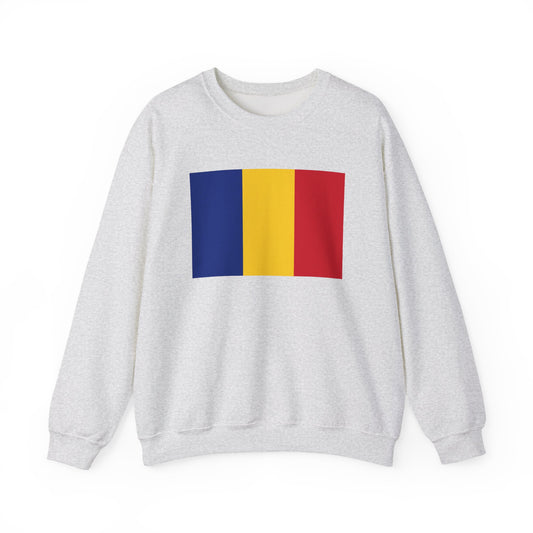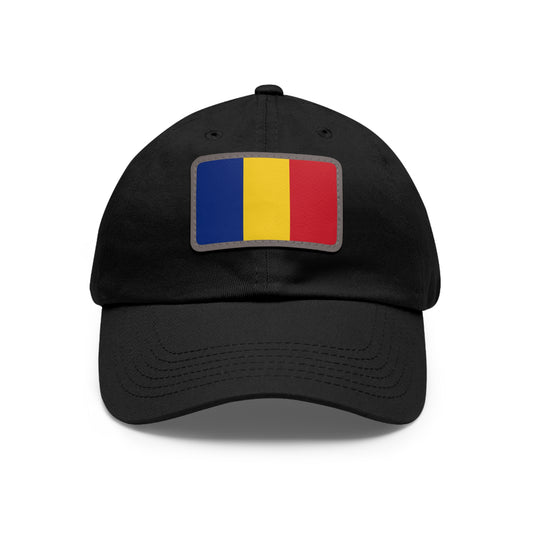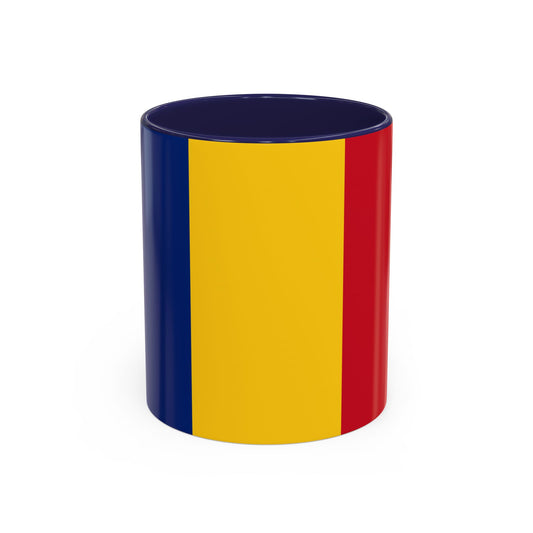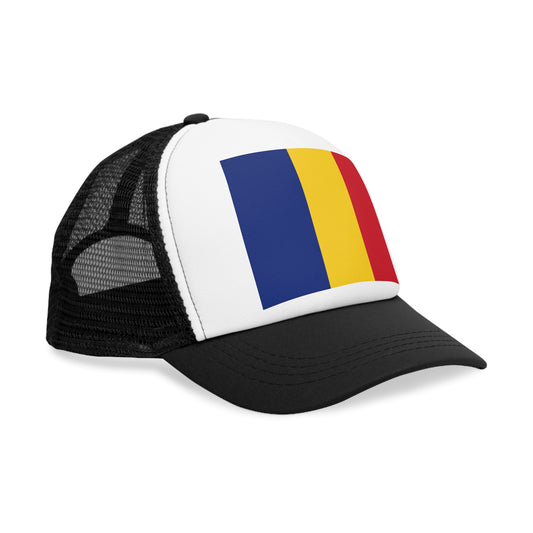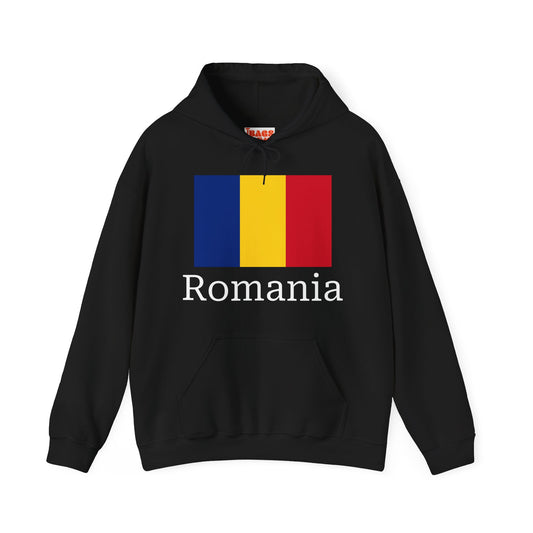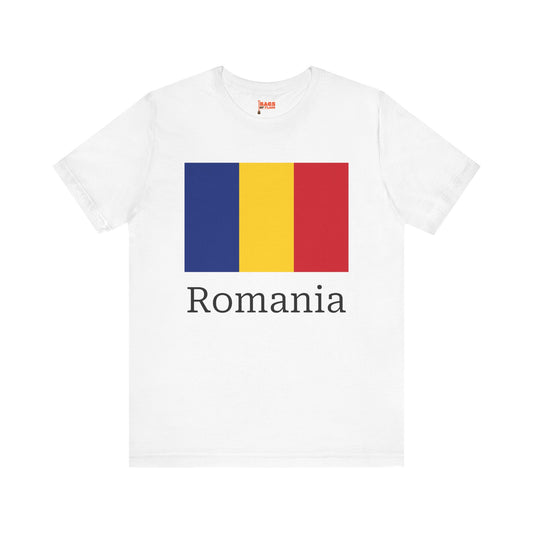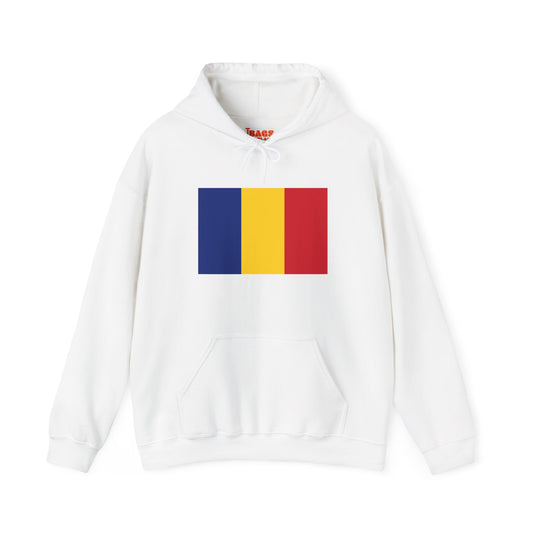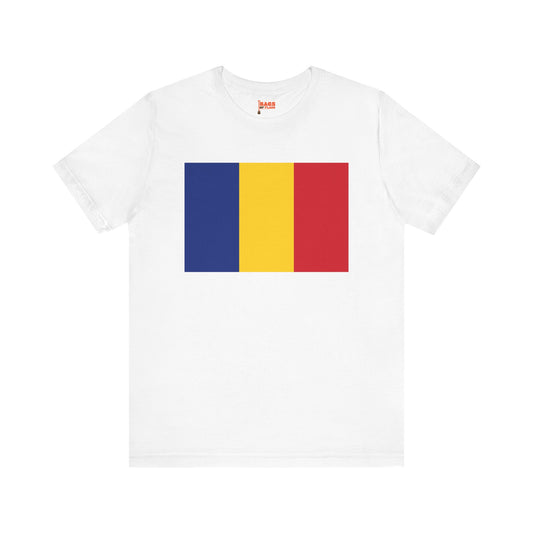-
Romania Sweatshirt
Regular price $34.15 USDRegular priceUnit price / per -
Romania Flag Sweatshirt
Regular price $34.15 USDRegular priceUnit price / per -
Romania Pillow
Regular price $22.65 USDRegular priceUnit price / per -
Romania Backpack
Regular price $59.79 USDRegular priceUnit price / per -
Romania Leather Patch Hat
Regular price $18.85 USDRegular priceUnit price / per -
Romania Mug
Regular price $11.65 USDRegular priceUnit price / per -
Romania Trucker Cap
Regular price $14.90 USDRegular priceUnit price / per -
Romania Hoodies
Regular price $34.40 USDRegular priceUnit price / per -
Romania T-shirts
Regular price $22.79 USDRegular priceUnit price / per -
Romania Flag Hoodies
Regular price $34.40 USDRegular priceUnit price / per -
Romania Flag on T-shirt
Regular price $22.79 USDRegular priceUnit price / per
Collection: Romania
The Romania flag, also known as the flag of Romania, is a tricolor flag consisting of three vertical stripes in blue, yellow, and red. This flag has a rich history and symbolism that dates back to its adoption. In this deep dive, let's explore the unique facts and controversies surrounding the Romanian flag.
Overview of the Romania Flag

The flag of Romania boasts a trio of vertical bands, each of equal width, showcasing the patriotic colors of blue, yellow, and red from the hoist side. The specific hue sequence is pivotal, as it embodies the nation's national identity and sovereign principles. The blue band is positioned nearest the flagpole, followed by the central yellow stripe, and finally, the red band completes the flag on the far side. This arrangement of colors is not only visually striking but also laden with cultural and historical significance.
The design’s simplicity belies its profound national importance, ensuring the flag’s easy recognition within Romania and internationally. Its vertical stripes convey a sense of equality and unity among the elements they represent, illustrating the balanced integration of values that are core to the Romanian spirit. As the flag flutters, each color vibrates with the legacy and aspirations of the Romanian people, making it a profound symbol of the nation’s past, present, and hopeful future.
Historical Context of the Romania Flag

The journey of the Romanian flag through history is as colorful and tumultuous as the stripes that adorn it. Initially adopted in the aftermath of the Romanian Revolution in 1989, this emblematic tricolor has roots that stretch back further, deeply entwined with the nation's quest for sovereignty and unity. The flag's origins can be traced to the Wallachian Revolution of 1848, a pivotal moment in Romanian history when revolutionaries sought to break free from foreign domination and express their national identity. Over the years, the flag has seen several revisions, each reflecting the changing tides of Romania's political landscape.
Before its current iteration, the flag underwent significant changes, notably during periods of occupation and subsequent liberation. Each adjustment to the flag's design mirrored the prevailing political ethos and the Romanian people’s resilience in adversity. Adopting the tricolor in 1989 was more than a mere change of national symbols; it marked the reclamation of Romania's independence and the restoration of its historical and cultural values, culminating in a flag that now flies as a testament to the nation’s enduring spirit and unity.
Symbolism Behind the Romania Flag
The three vibrant stripes adorning the Romania flag carry profound significance, each a beacon of the nation’s core values and historical journey. The azure blue, positioned nearest the flagpole, serves as a reminder of the endless sky above and the vast seas that have bordered Romanian civilization, symbolizing the limitless possibilities and hope that guide the nation forward. The central golden yellow band captures the richness of Romania’s fertile lands and bountiful resources, reflecting the prosperity and the wealth of cultural heritage nurtured over centuries.
The final stripe of crimson red vividly represents the resilience and courage of the Romanian people, a tribute to the blood sacrificed in the pursuit of freedom and independence. These colors do not stand alone but are interwoven with the Romanian populace's shared destiny and collective spirit, embodying the ideals of liberty, unity, and national pride that have propelled the country through its storied history. Together, they forge a visual narrative of Romania’s past struggles and aspirations, encapsulating the essence of its identity in a banner that flies with dignity and honor.
Current Relevance of the Romania Flag
Today, the Romanian flag is a fixture at national celebrations, solemn military occasions, and a beacon of patriotism for its citizens. It adorns public buildings, schools, and homes, especially during significant holidays like the National Day of Romania, symbolizing solidarity and national pride. In moments of sporting triumph or international competitions, the flag becomes a unifying emblem for athletes and supporters, representing the country on a global stage.
However, the flag has not been immune to controversy. Discussions about its resemblance to the flags of other countries have occasionally surfaced, leading to debates on national identity and uniqueness. Additionally, the precise shades of blue, yellow, and red have been a topic of contention, with various groups advocating for adjustments to reflect historical or cultural significance more accurately. These debates highlight the flag's central role in Romanian society and the intense feelings it evokes among the populace.
Beyond its symbolic display, the flag is also integral to educational programs, where it serves as a tool for teaching younger generations about Romania's history, values, and the sacrifices made for national freedom. Through these discussions and displays of the flag, Romanians of all ages are reminded of their shared heritage and the responsibilities that come with it, ensuring the flag’s continued relevance in both ceremonial and everyday contexts.
Additional Facts and Protocols Surrounding the Romania Flag
In the realm of etiquette and formality, the Romanian flag is governed by a set of guidelines ensuring its respectful presentation. Notably, when displayed, the flag must be positioned so that it never comes into contact with the ground, symbolizing the nation's sovereignty and dignity. Further, the protocol dictates precise practices for the flag's hoisting and lowering, typically observed during official ceremonies and public holidays to reflect the country's respect for its national emblem.
The flag's display alongside other national flags must adhere to international standards, ensuring it is placed in a position of honor. Additionally, there is a tradition of flying the flag at half-staff during national mourning, signifying the country's collective grief and respect for the deceased. In educational contexts, the flag is used as a pedagogical tool, fostering a sense of national pride and awareness of civic duties among students. These protocols and traditions underscore the deep reverence held for the Romania flag, symbolizing the enduring spirit and unity of the Romanian people.




